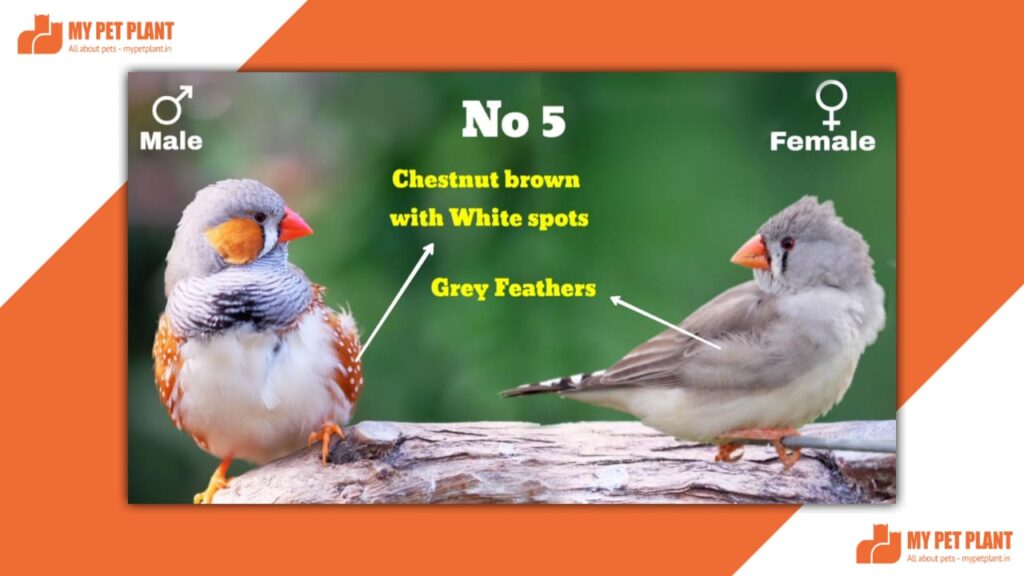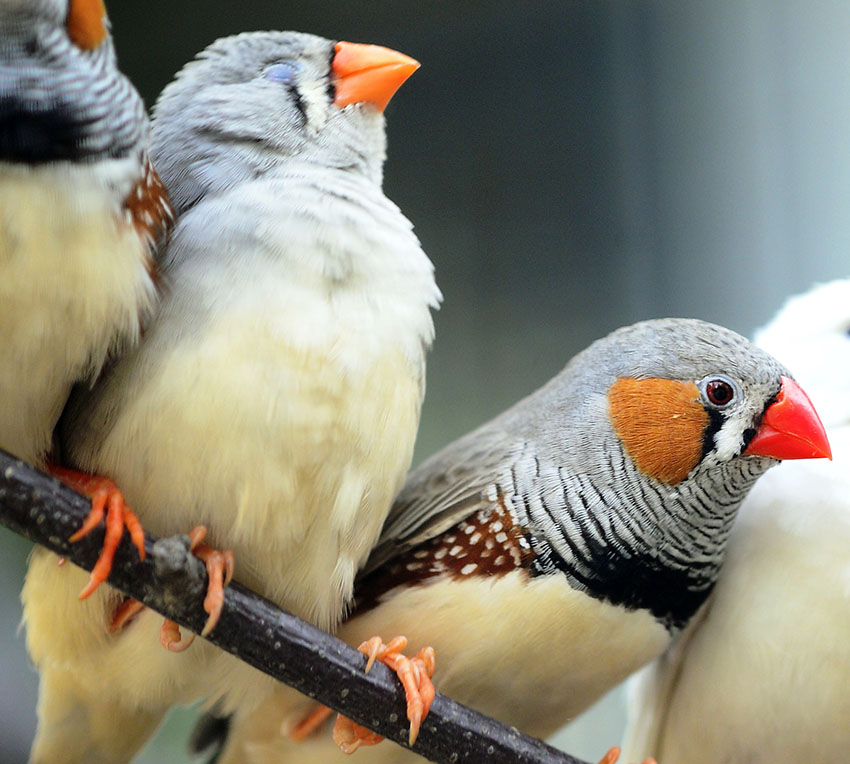How To Identify Finches Male And Female

So, you've got finches. Adorable, chirpy little things, aren't they?
But are you staring at a bunch of 'him' finches or a feathered 'her' power-house?
The "Obvious" Clues... That Aren't Always Obvious
Everyone says it's easy. The male is brighter, bolder, and basically dressed for a party. The female? Well, she's supposed to be plain and...sensible.
Let's talk about the Zebra Finch. The male is known to show off those vibrant orange cheek patches. While the ladies sport a more muted look.
But here's my unpopular opinion: those cheek patches aren't always a dead giveaway. Sometimes, those little guys are just having a bad feather day.
Beak Appeal: Not Just for Food!
The beak is another supposed clue. With Zebra Finches, the male sports a bright red-orange beak. Females? A more subtle orange.
But have you seen the lighting in my bird room? It’s atrocious! Everything looks orange-ish. Thanks, builder-grade fixtures!
Seriously, distinguishing "bright red-orange" from "slightly less bright orange" is like splitting hairs.
Beyond the Visuals: It's All About Attitude (Maybe)
Okay, so maybe color isn't the most reliable method. What about behavior? Experts claim males are the singers.
They trill, they chirp, they try to woo the ladies with their amazing vocal prowess. Meanwhile, females usually stick to simple 'cheep' sounds.
But my society finches clearly didn't get the memo. There are times I think both genders are having a loud chat about who gets the best millet spray.
The Wing Wiggle: A Subtle Dance of Love?
Some claim the male will do a little "wing wiggle" dance to impress the female. A little flirtatious shimmy, if you will.
I've seen it. But here's the thing: sometimes, they just seem itchy. Or maybe they are stretching! It's hard to tell with birds.
Honestly, half the time, I think they're just showing off for the mirror. Narcissistic little floofs.
When in Doubt, Observe!
Forget all the "rules." The best way to tell if you have a male or female? Observe!
Who's building the nest? Who's doing the most begging for food? Context is key.
If you’re breeding Gouldian Finches, for instance, you will be able to see their colors as adult. The male has a more intense color.
The Ultimate Test: Wait and See (and Hope)
Let's be honest: sometimes, you just have to wait. If you get eggs, congratulations! You have at least one female.
And if you get a tiny finchlet singing its heart out? You've probably got a little mini-me male on your hands.
But even then, who knows? Birds are weird. And that's why we love them.
Final Thoughts (And My Actual Unpopular Opinion)
Honestly, I think half the fun is not knowing for sure. It's like a feathery guessing game!
So embrace the mystery. Enjoy the chirps, the colors, and the general adorable-ness of your finches.
And if you accidentally name your female "Fernando?" Who cares! They won't judge. (Probably.)
After all, a happy finch is a happy finch, regardless of what's between its feathers.












:max_bytes(150000):strip_icc()/house-finch-or-purple-finch-387318_V3-b016351e51124d87a7290d2b3ec65305.png)





